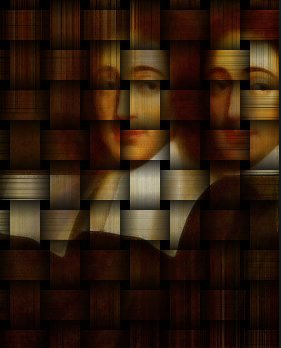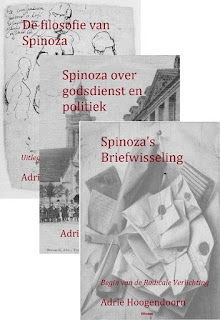Apparaat maken van de Ethica
De geometrische opbouw van de Ethica heeft al meerderen verlokt om de systematiek ervan in kaart te brengen. Zoiets kan ook alleen maar met een zodanig opgebouwde tekst. Ik heb op dit blog al enkele van die pogingen gesignaleerd en zal daar binnenkort eens een verzamelblog aan wijden. Gisteren liep ik weer eens tegen zo’n best veel tijd vergend knutselwerk aan. Torin Doppelt, filosofiestudent aan Queen’s University in Kingston, Canada, (mét interesse in programmeren) heeft een matrix gemaakt van de geometrische structuur van de Ethica, die hij in tabellen weergeeft.
best veel tijd vergend knutselwerk aan. Torin Doppelt, filosofiestudent aan Queen’s University in Kingston, Canada, (mét interesse in programmeren) heeft een matrix gemaakt van de geometrische structuur van de Ethica, die hij in tabellen weergeeft.
Hij heeft voorts drie teksten van de Ethica naast elkaar gezet: De Latijnse van de Opera Posthuma, de Nederlandse van de Nagelate Schriften en de Elwes-vertaling.
 Creatief is hoe hij de matrixopzet van zijn project in dit logo aangeeft.
Creatief is hoe hij de matrixopzet van zijn project in dit logo aangeeft.
Toen ik op zijn naam verder zocht, kon ik zien dat hij vorige maand zijn website ook op het spinozaresearchnetwork heeft gepresenteerd. Daar zegt hij: “I hope to use the tables to both generate new puzzles about Spinoza’s use of the geometrical method (they have already done so, in fact), and perhaps even resolve old puzzles. At the very least I hope they can be used to help scholars (especially myself) avoid missing important details of Spinoza’s notoriously opaque text.”
Hij is al een heel eind op weg, maar is nog bezig, b.v. met hyperlinks aan te brengen, waarmee door de bewijzen kan worden genavigeerd. De updates verantwoordt hij op de openingspagina.
Ik heb er alleen nog maar - vol bewondering- naar gekeken, nog niets ermee gedáán.Zijn ‘gebruiksaanwijzing’ neem ik over van ’t spinozaresearchnetwork:
"There are colour-coded tables for each part of the Ethics, in which each column represents a proposition or other demonstrated element, and each row represents the elements that can be used in the proofs. There are three main ways the tables can be used: the explicit uses of an element can be determined by tracing across to cells which contain letters representing the type of use (e.g., in a main demonstration, or in a corollary, scholium, etc.), and then tracing upwards (or downwards) to determine the location. Alternatively, the explicit elements used in a given demonstration can be determined simply by noting all the filled-in cells in a column. The tables can also illuminate the way in which elements of the Ethics depend on other elements, in a way that is not apparent from the text: by tracing backwards from the elements used in a given demonstration to their columns, it is easy to determine on which further elements the first demonstration depends. There are also other ways to derive information, including tabulating usage statistics, and producing graphs of data from different sections. In this way, much information contained in the Ethics that had not been easy to see before is now accessible at a glance."
Zijn project: Spinoza's Ethics 2.0
Zijn geluidshandtekening "spinocylinder" op soundcloud:
Jammer vind ik wel dat hij de menu's in de header onder elkaar i.p.v. naast elkaar zet, waardoor de kop onnodig groot is. Hoewel, dat heeft te maken met de browser, zie ik nu. Internet Explorer geeft ze onder elkaar, Google Chrome naast elkaar.

